Graham Reid | | 6 min read
Universal Here, Everlasting Now by The Fireman (from Electric Arguments)
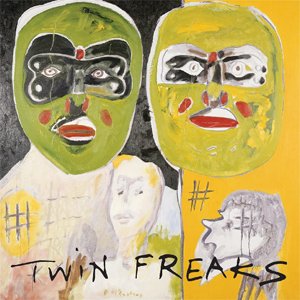
It contained details of the former Beatle’s actual worth.
Everyone knew he was filthy rich but no one knew exactly how
filthy. The Sunday Times in the UK had speculated him to be worth about 825 million
pounds but when the document came to light it seems he was not quite that far
into the stratosphere, he was worth a mere 387 million, a wealth accrued for not just from music
sales but publishing he owned (the Buddy Holly catalogue among them),
properties, investments and so on.
Among the “so on” was his collection of paintings and artworks
by the likes of Willem de Kooning, Rene Magritte, Matisse, Picasso and Renoir which
added up to a tidy 32.2 million.
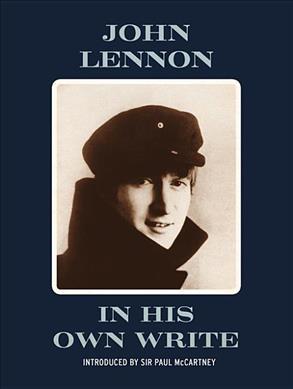 John Lennon might have been the Beatle who went to art college and published little books of his surreal writings and line drawings (In His Own Write in '64 and Spaniard in the Works in '65) but
McCartney always had his eye on the visuals.
John Lennon might have been the Beatle who went to art college and published little books of his surreal writings and line drawings (In His Own Write in '64 and Spaniard in the Works in '65) but
McCartney always had his eye on the visuals.
Early on he realised he was basically a working class Liverpool
lad with fairly bourgeois tastes so when he fell into the circle of his
girlfriend Jane Asher’s family and friends in London he glimpsed another more
refined and artistic world which, as a Beatle, he had access to.
While Lennon lolled around in his suburban home in the stockbroker belt outside London and grew bored, McCartney was out in the nightclubs and bookshops, attending classical concerts and going to the theatre, and discovering Stockhausen and musique concrete.
He met the philosopher Bertrand Russell ("Somehow I got his number and called him up"), Harold Pinter, lawyer/writer John Mortimer, playwright Kenneth Tynan, producer/director John Schlesinger (Midnight Cowboy), Noel Coward ("He said some not to pleasant things about us after that, so fuck him anyway") and many many more.
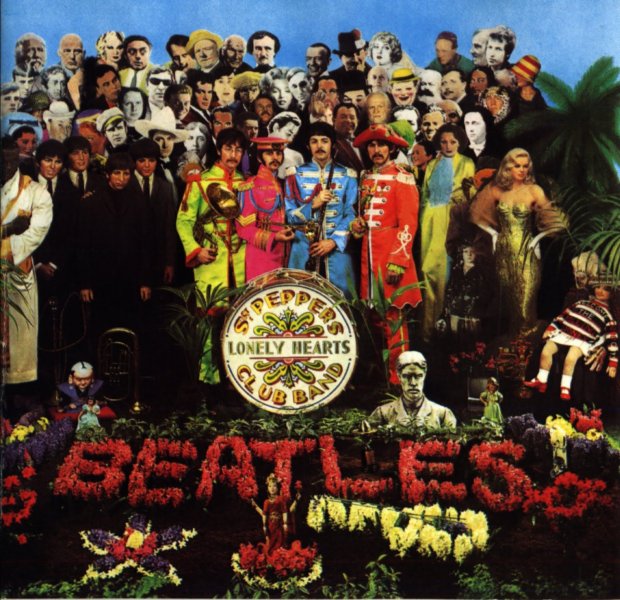 He also went to art galleries and soaked up ideas.
He also went to art galleries and soaked up ideas.
Through the bookstore owner Barry Miles (who owned Indica with the art critic John Dunbar, supported with finance from Jane’s brother Peter), McCartney got to meet the art dealer Robert Frazer . . . who went with McCartney to Paris where McCartney bought two Magritte paintings, then later another being a picture of an apple entitled Le Jeu de Mourre.
He also met artists David
Hockney and Claes Oldenburg, Richard Hamilton and Peter Blake.
It’s worth remembering that it was McCartney who conceived of
the idea of the Beatles being Sgt Pepper’s Lonely Hearts Club Band and that he
came up with the concept for the cover which the artist and friend Peter Blake
and his wife Jann Haworth would create. He also claimed credit for the idea for
the cover of the White Album.
 McCartney is also credited with the Apple image for their
company Apple Corp (Lennon liked the pun) which he seems to have “borrowed”
from that work by one of is favourite painters, Rene Magritte: "That's where it all came from, this one painting, a big beautifully painted green apple in a frame".
McCartney is also credited with the Apple image for their
company Apple Corp (Lennon liked the pun) which he seems to have “borrowed”
from that work by one of is favourite painters, Rene Magritte: "That's where it all came from, this one painting, a big beautifully painted green apple in a frame".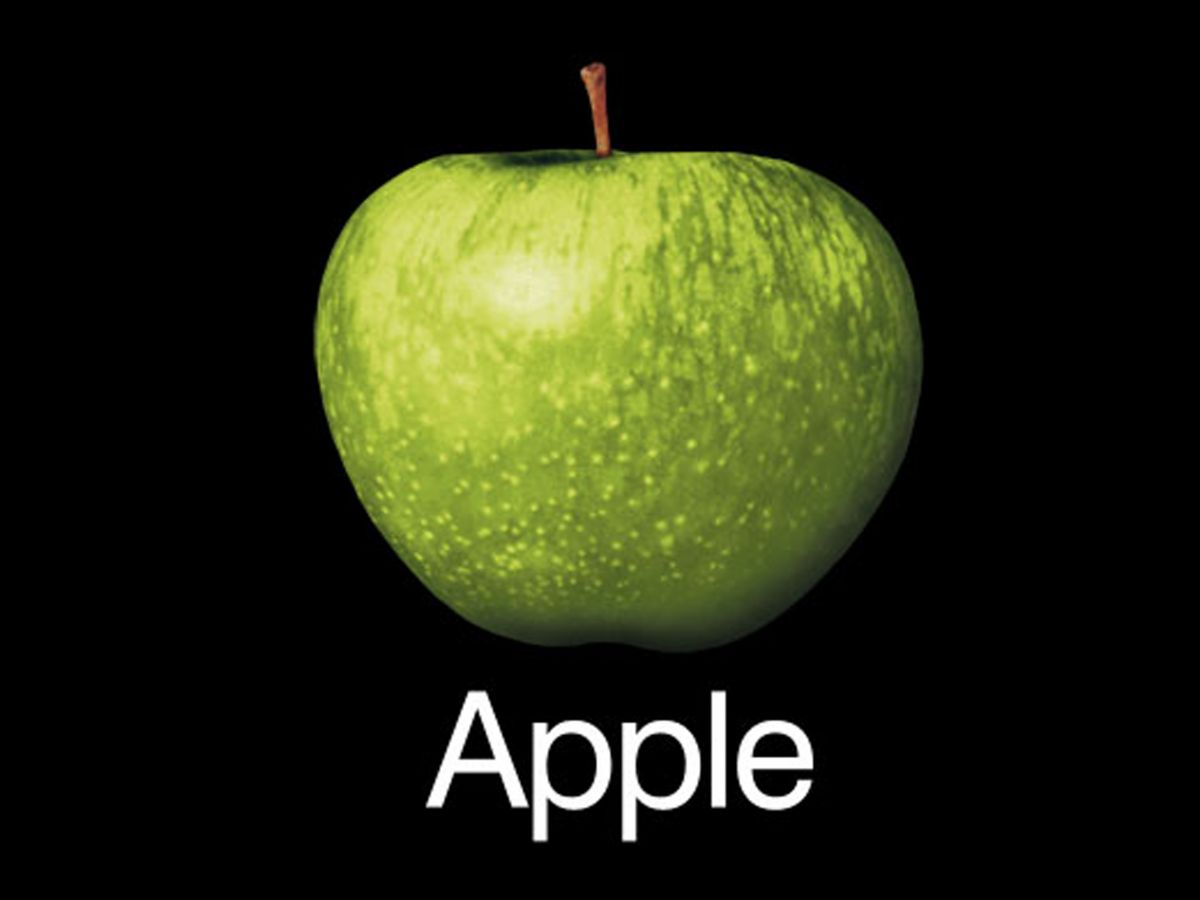
So McCartney developed an eye for art collecting and later began
to experiment with his own art works, notably painting.
The father of his photographer wife Linda Eastman represented
the artists Mark Rothko and Willem de Kooning, the latter becoming a friend and inspiring McCartney
to buy paints and get to work. (In fact wife Linda bought him a mixed lot of materials, an easel and paints from the estate of Magritte who died in '67.)
He would subsequently exhibit some of his work, but not to
much critical acclaim.
In 1999 he had an exhibition in Siegen, Germany although he
rejected an essay for the catalogue in which an academic Professor Gundolf
Winter said he was a good painter but would never have a position in art
history.
A more complimentary essay was substituted, but the critics
were divided.
The worst notice came from British critic Brian Sewell who
said his paintings were “a self-indulgent impertinence so far from art that the
art critic has no suitable words for them – they are, indeed, beneath
criticism. They may have some private and personal value as therapy, but exposed
to the public gaze they betray his arrogance and vanity . . . he is not a
painter”.
Ouch!
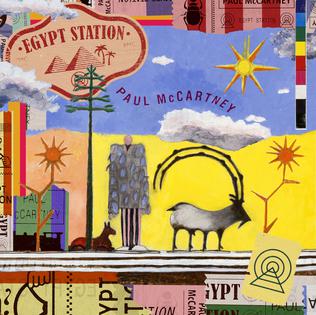 Clearly he was no musician-artist in the realm of Joni
Mitchell, Tony Bennett or Ronnie Wood. And Bob Dylan's representational work in
recent years is a vast improvement on his earlier Self Portrait stuff, and
quite some length ahead of McCartney.
Clearly he was no musician-artist in the realm of Joni
Mitchell, Tony Bennett or Ronnie Wood. And Bob Dylan's representational work in
recent years is a vast improvement on his earlier Self Portrait stuff, and
quite some length ahead of McCartney.
But McCartney perhaps took solace in the fact 45,000 people turned up at the Lyz Art Form to see his paintings, more than 10 times the number the gallery usually attracted.
For someone who works in the world of popular entertainment where sales mean more than reviews, McCartney would see that as validation.
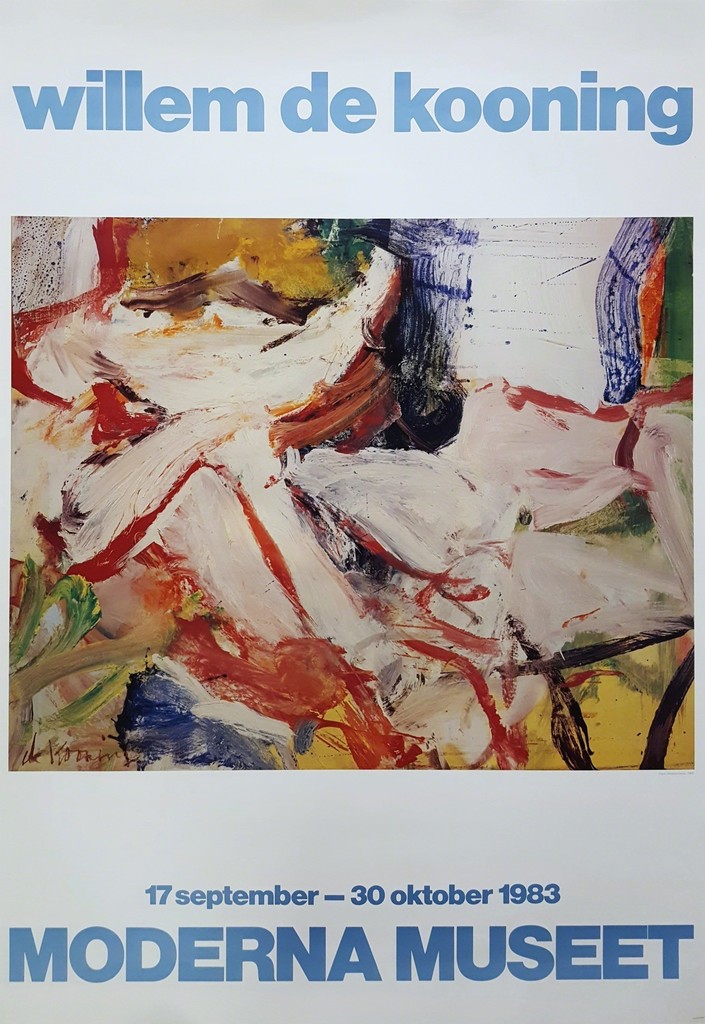 In his authorised biography of McCartney, Many Years From Now, his friend Barry Miles describes McCartney's paintings this way: "His influences are not disguised but nor are they ill-digested. Objects suspended in space always suggest Magritte, vigorous red-brown gestures are obviously reminiscent of de Kooning, and one particularly succesful white canvas, with evidence of previous work showing through from below, has been scratched and worked on with words and shapes in a manner very like that of Cy Twombly."
In his authorised biography of McCartney, Many Years From Now, his friend Barry Miles describes McCartney's paintings this way: "His influences are not disguised but nor are they ill-digested. Objects suspended in space always suggest Magritte, vigorous red-brown gestures are obviously reminiscent of de Kooning, and one particularly succesful white canvas, with evidence of previous work showing through from below, has been scratched and worked on with words and shapes in a manner very like that of Cy Twombly."
McCartney has always openly admired the bold vigour of de Kooning's work: "You could say I'm star-struck or something but he has influenced me. Seeing someone like him draw, seeing someone like him paint, being there in his studio, seeing his attitude has given me quite a buzz . . . You have to paint abstract after you've been seeing Bill de Kooning.
"You wonder why you bother after you've seen his work."
It’s an odd thing then that the available canvas which McCartney could have used – album covers – have rarely displayed his work.
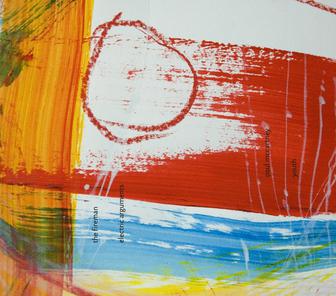 Perhaps the need for
an image of him on a cover has prevented that, and it is notable that the two
where his work has appeared are both albums where he was largely anonymous: the
cover for The Fireman’s Electric Arguments (2008) and the Twin Freaks remix album in 2005 with DJ Freelance Hellraiser (at the top of the page).
Perhaps the need for
an image of him on a cover has prevented that, and it is notable that the two
where his work has appeared are both albums where he was largely anonymous: the
cover for The Fireman’s Electric Arguments (2008) and the Twin Freaks remix album in 2005 with DJ Freelance Hellraiser (at the top of the page).
But his latest album Egypt Station does feature his art (and
the title was shared with the cover painting from 30 years previous).
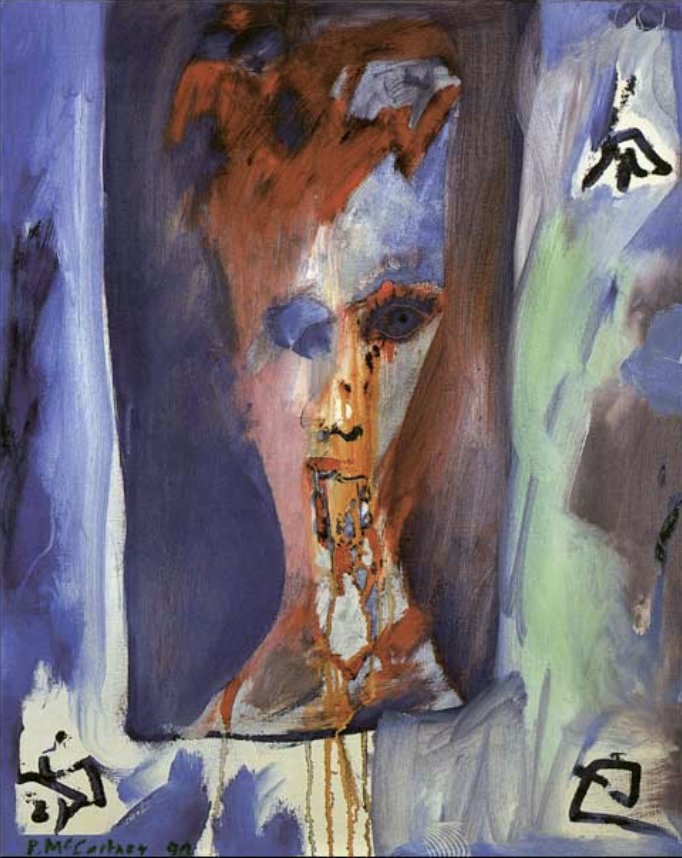 It would be charitable to simply observe it isn’t up there
with his best album covers . . . but the fact it is there at all perhaps
directs people to his website where a number of his paintings are there for
consideration, among them Bowie Spewing.
It would be charitable to simply observe it isn’t up there
with his best album covers . . . but the fact it is there at all perhaps
directs people to his website where a number of his paintings are there for
consideration, among them Bowie Spewing.
It would be very cruel to say that Bowie was heaving after having seen a McCartney painting.
But that would be unnecessary cruel . . .
Unless you were Brian Sewell.
A selection of Paul McCartney's art is available at his website here. What follows are a few examples. Starting with the original Egypt Station painting from 1988.
.
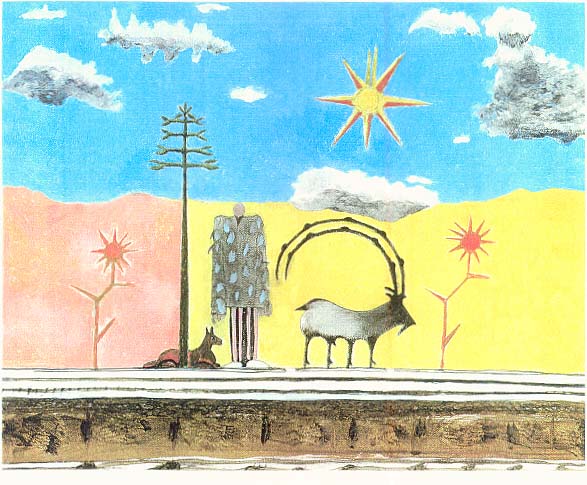
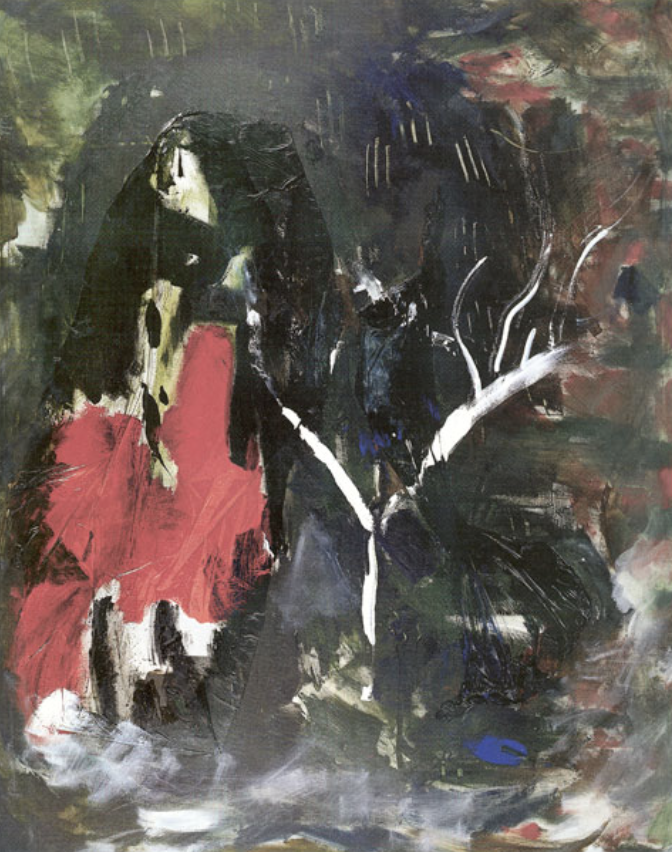
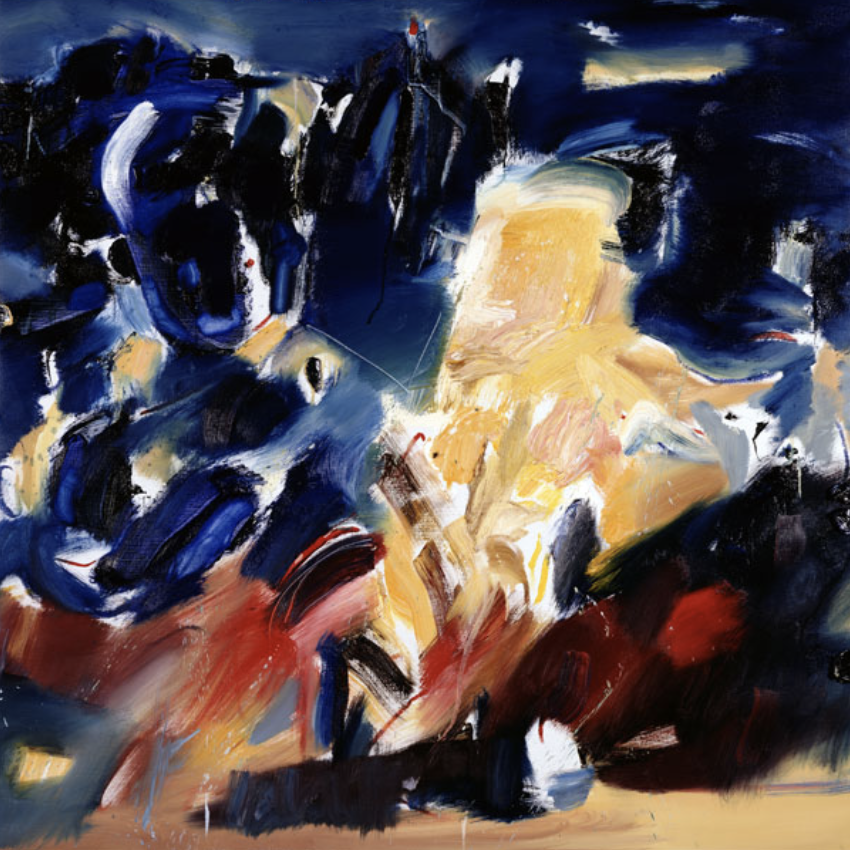
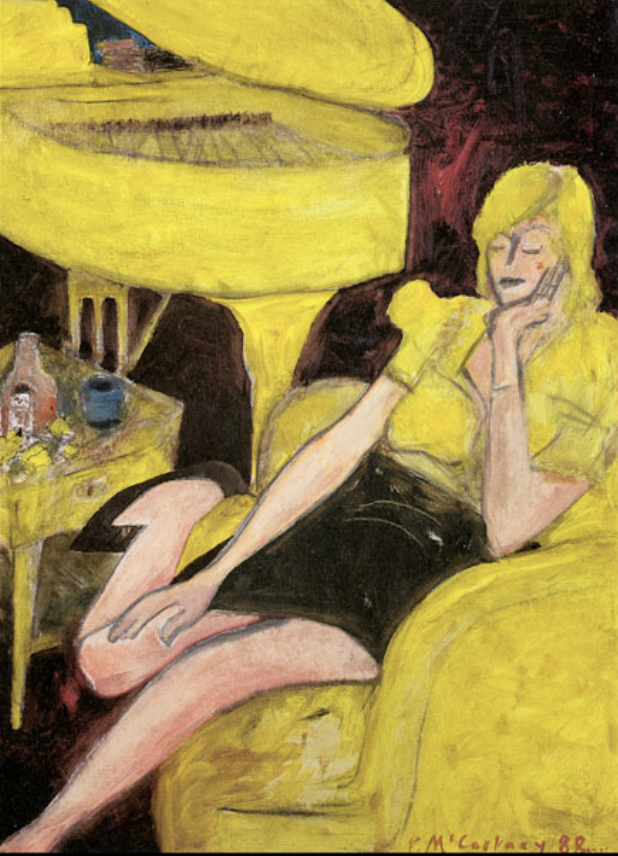
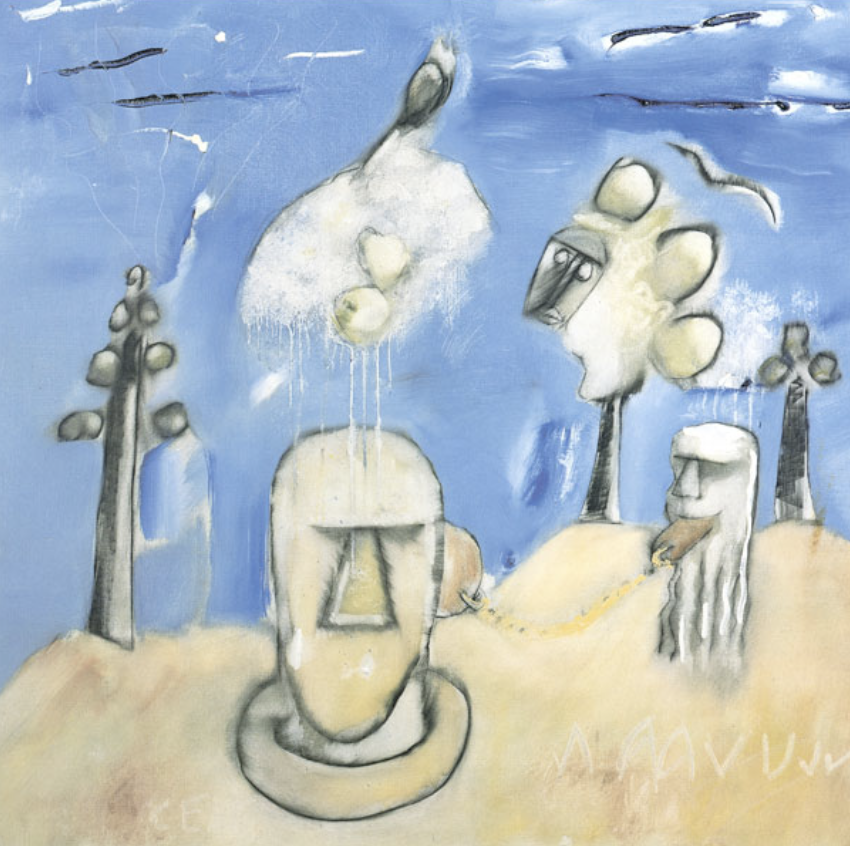
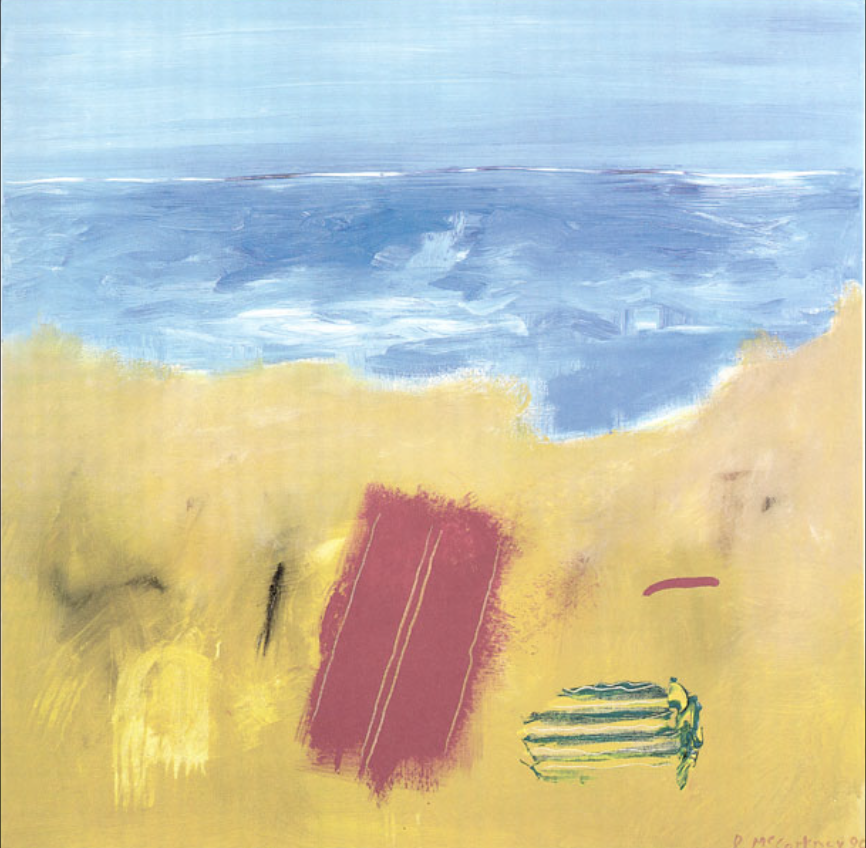

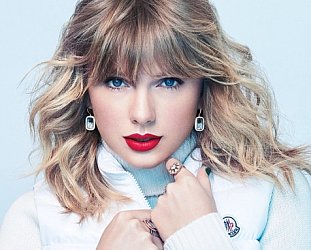

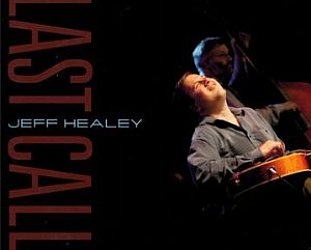
post a comment